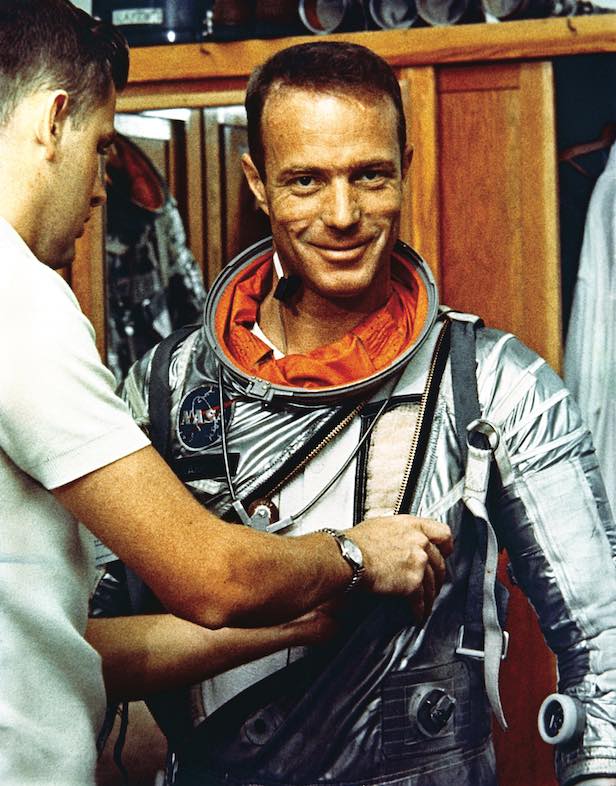Heroes of Space: Scott Carpenter
Carpenter was a true leader in NASA’s campaign to reach space with his efforts in Project Mercury

Carpenter only flew into space once, as part of the Aurora 7 mission. Image credit: NASA
When looking at the current state of NASA and acknowledging the constant presence astronauts have in space on board the International Space Station, it is important to look back on the trailblazers that paved the way. Scott Carpenter was a fundamental part of this movement, and this is heavily reflected in his accomplishments.
Born on 1 May 1925 in Boulder, Colorado, United States, as Malcolm Scott Carpenter, he gained a bachelor’s degree in aeronautical engineering from the University of Colorado in 1949. However, the profession that truly led him down the path to becoming an astronaut was his position as a naval aviator, beginning in 1951.
On 7 October 1958, when NASA was only a few months old, Project Mercury was created. Its aims were clear: it was a head-to-head competition with the Soviet Union in a race to head to space. In order to sift out the weak, NASA constructed a harsh, but necessary astronaut selection criterion. Only seven candidates were deemed worthy of the position, mainly because of the fact they were all military test pilots. This was because NASA was adamant they needed men who could operate high-performance aircraft under stress. Carpenter was among these seven men, who became known as the ‘Mercury Seven’.
Carpenter’s time as part of the Mercury Seven crew was an incredible step forward in space exploration for the Americans, but they were still behind the Soviets. On 24 May 1962, Scott Carpenter boarded his Aurora 7 capsule on top of an Atlas rocket and became the second American to orbit the Earth, behind his colleague John Glenn, and the fourth American to make the journey into space.
Unfortunately, this journey didn’t come without its problems. Soon after launch, the spacecraft’s pitch horizon scanner, which is an essential device for navigation, had malfunctioned. Another problem was to follow when Carpenter had too eagerly used his manoeuvring jets to observe a ground flare experiment in Australia, which consequently depleted more fuel than anticipated.
This also caused heat build-up in the capsule, causing sweat to interfere with Carpenter’s vision. Unknown to anyone at this point, the timing mechanism for the retro rockets on the heat shield was also not working properly, which could potentially have proven life-threatening upon re-entry.
With all these problems unfolding, Carpenter had no choice but to make minor re-entry adjustments to his falling capsule by manually steering the capsule and keeping the horizon in sight using his one and only window. Thankfully, Carpenter made it back to Earth, albeit 400 kilometres (250 miles) off the predetermined landing spot. After his recovery, Carpenter was awarded the NASA Distinguished Service Medal, the highest honour that NASA bestows.
After Project Mercury was closed in 1963, Carpenter became an aquanaut in the Sealab II program, and eventually went on to become executive assistant to the director of the Manned Spacecraft Center, which helped design the Apollo Lunar Landing Module. Along with the NASA Distinguished Service Medal, Carpenter gained the Navy Legion of Merit, the Distinguished Flying Cross, the University of Colorado Recognition Medal and the Collier trophy.
Sadly, on 10 October 2013, Carpenter passed away in Denver, Colorado, United States, aged 88. The NASA administrator at the time, Charles Bolden, said Carpenter “was in the first vanguard of our space program – the pioneers who set the tone for our nation’s pioneering efforts beyond Earth and accomplished so much for our nation,” following his passing.
Keep up to date with the latest news in All About Space – available every month for just £4.99. Alternatively you can subscribe here for a fraction of the price!




